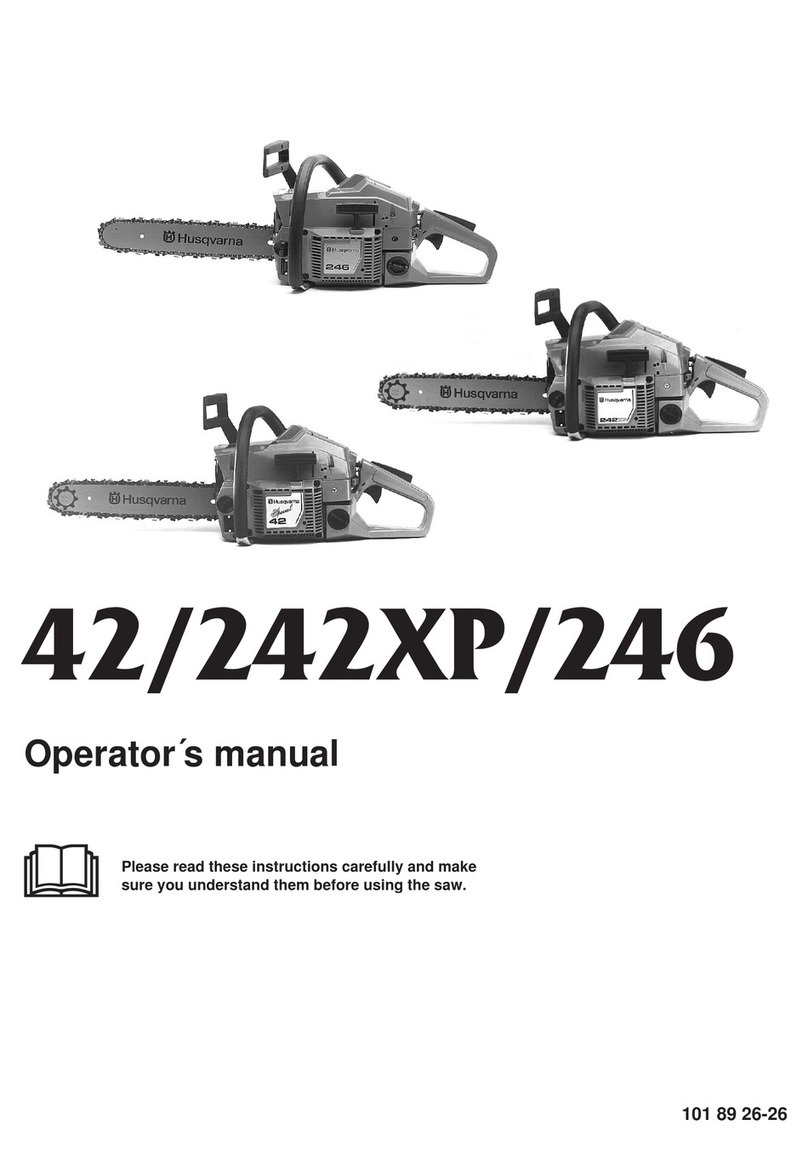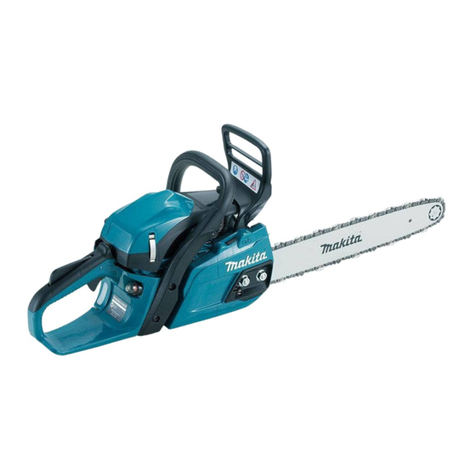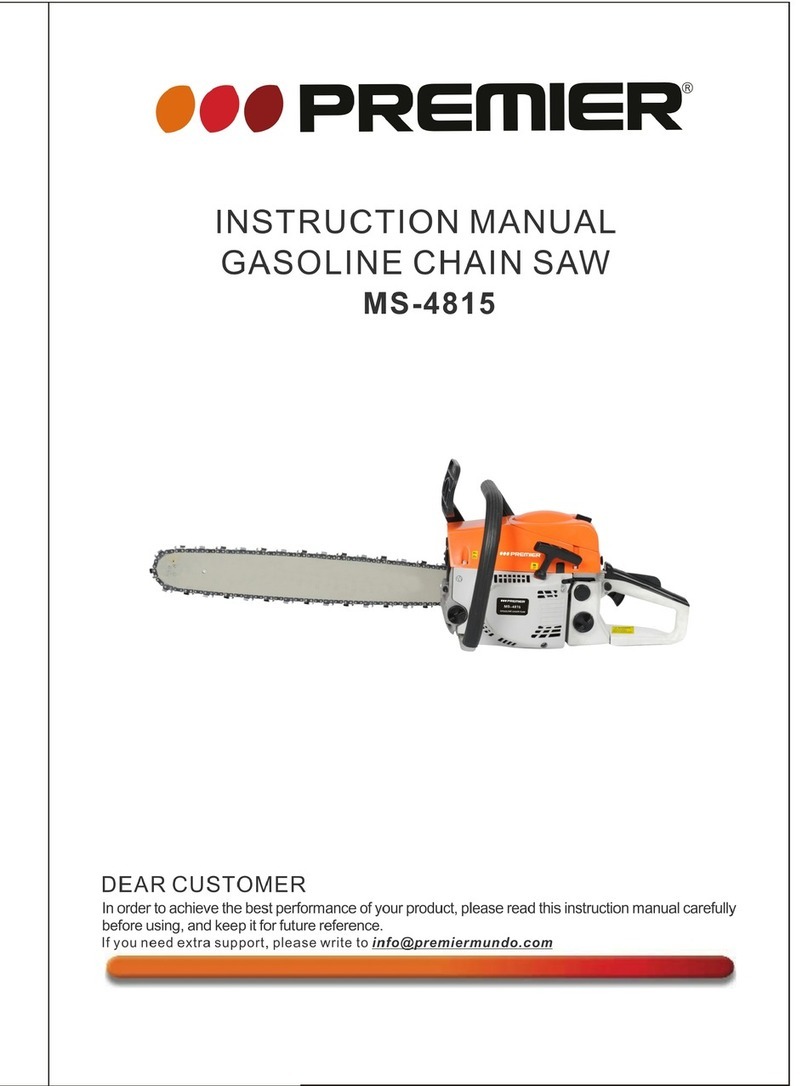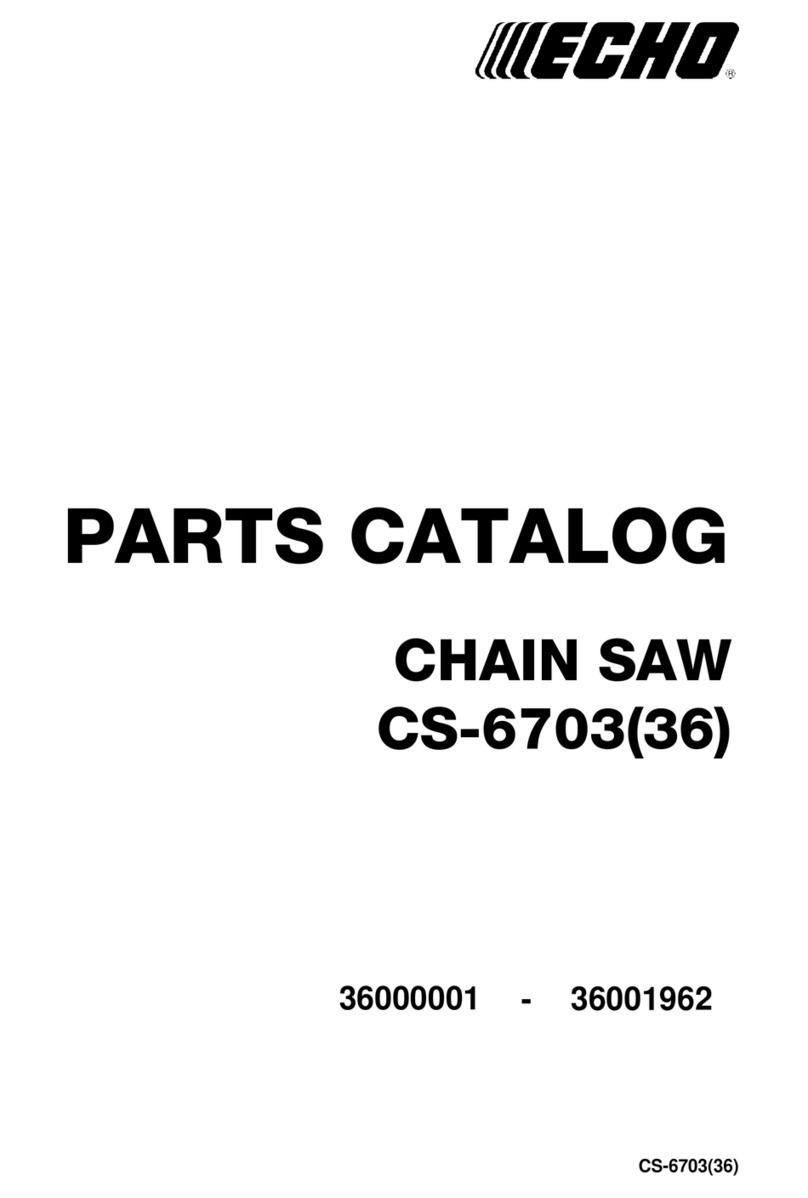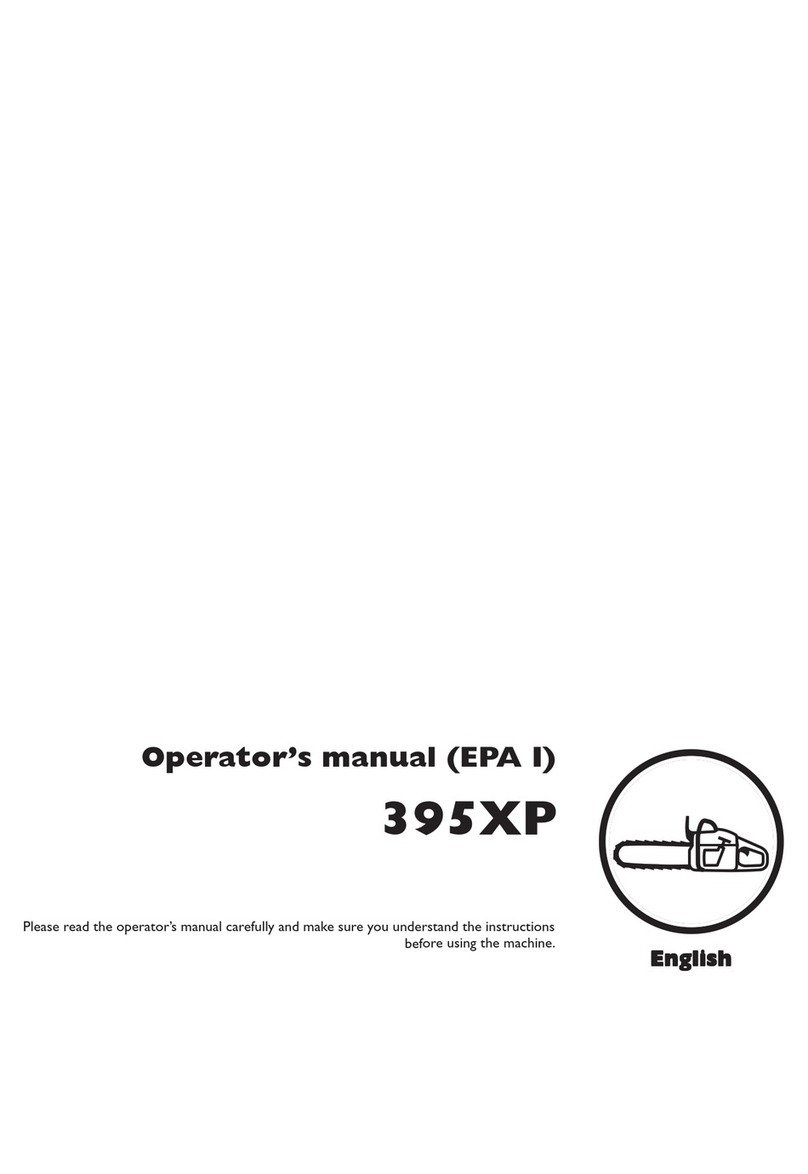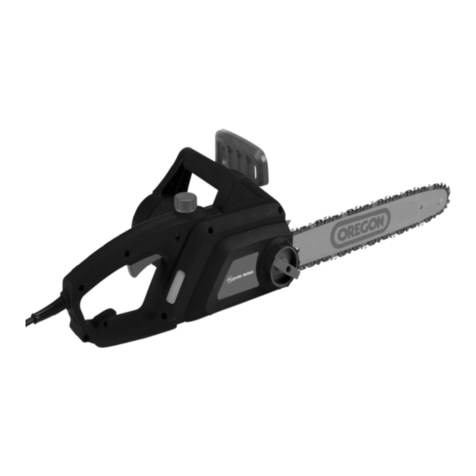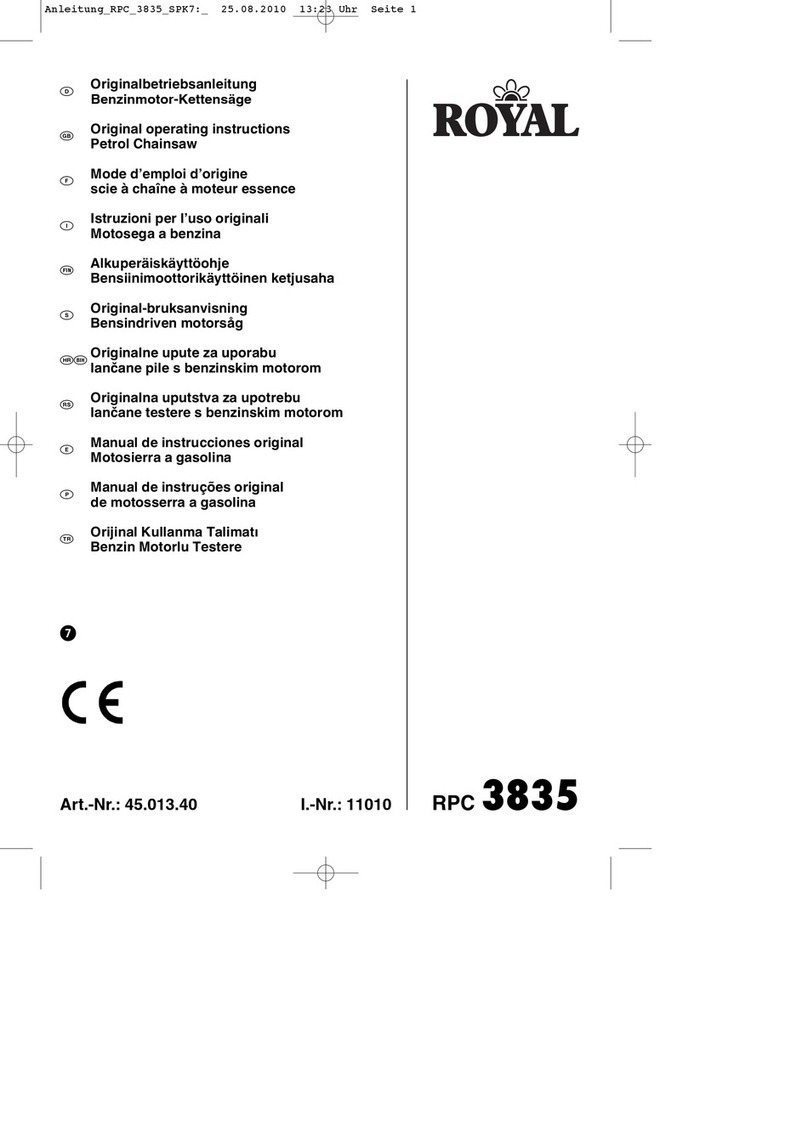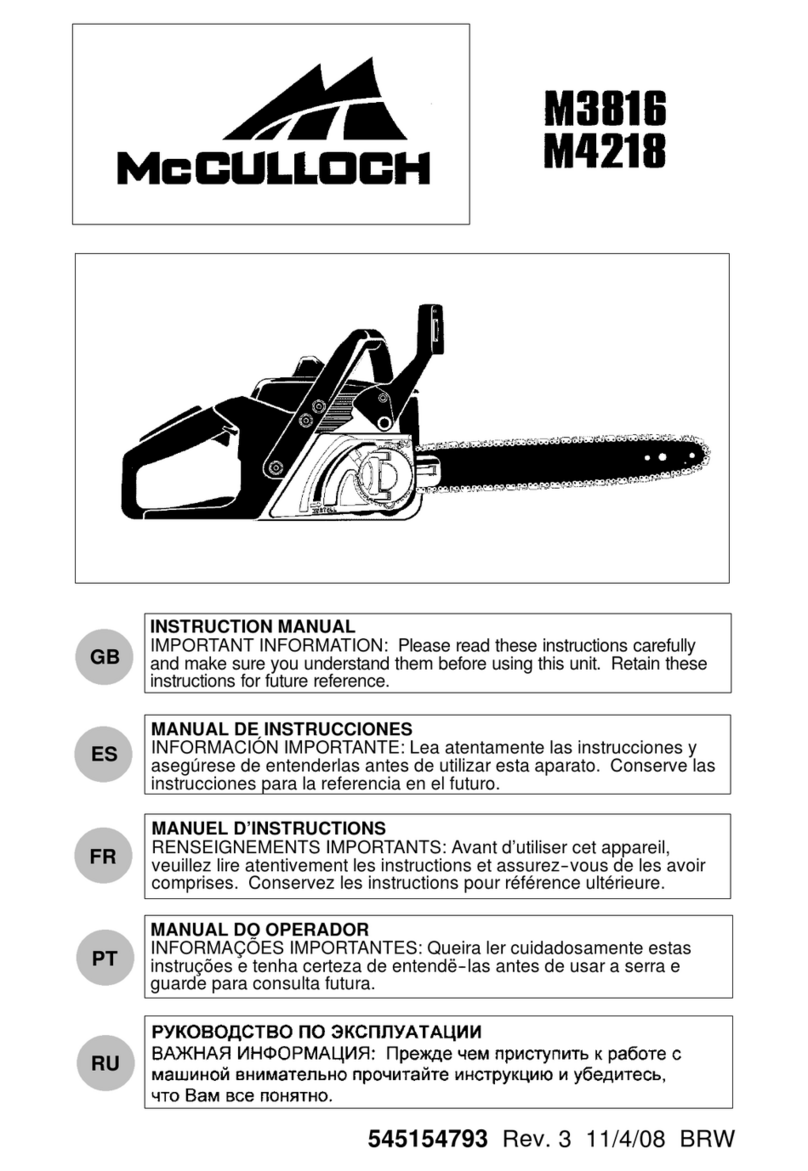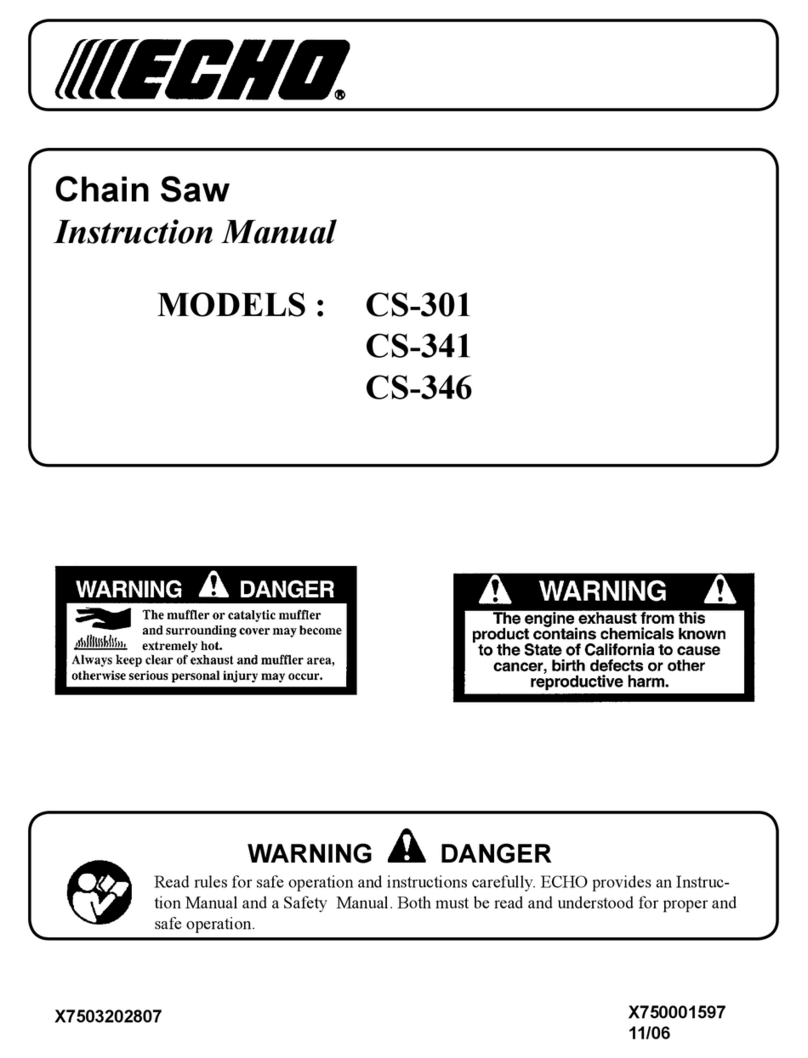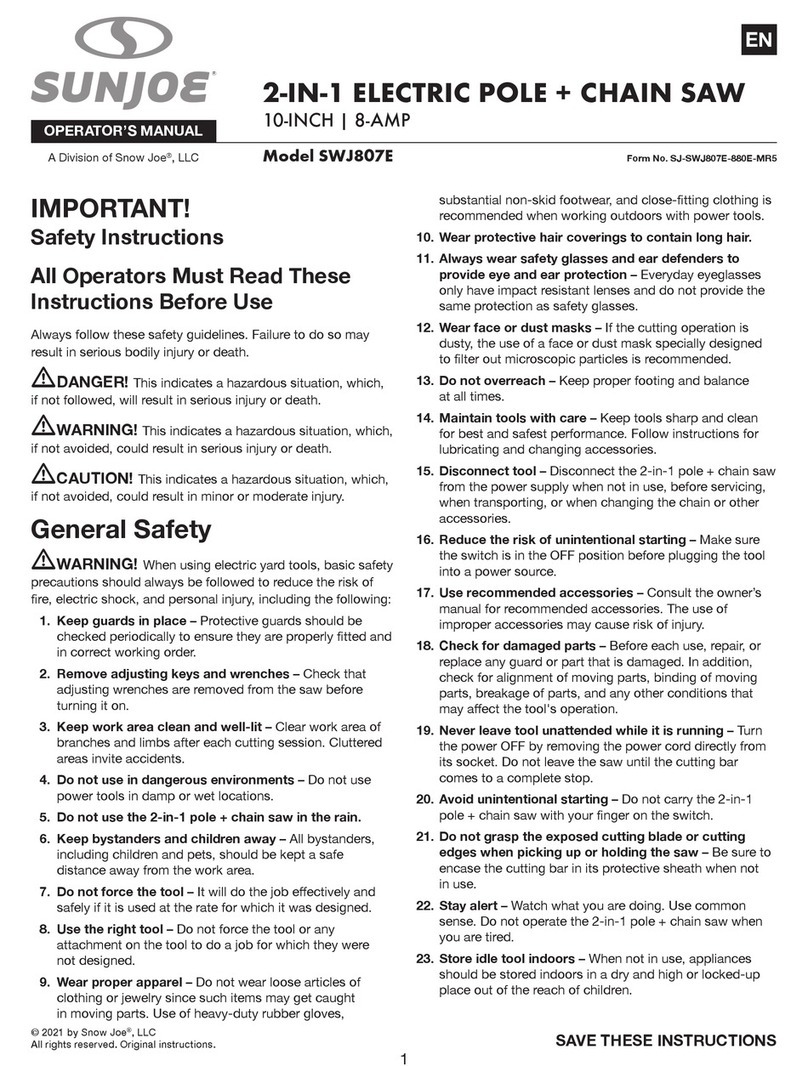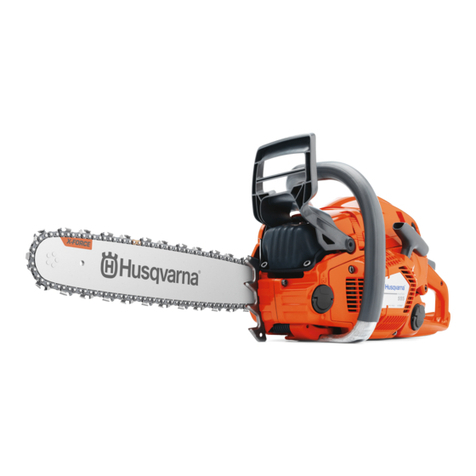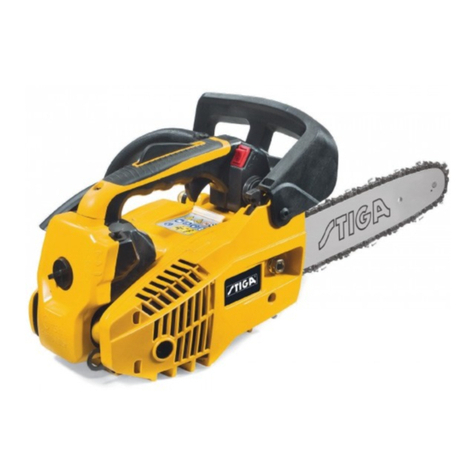Belmash MCS-400 User manual

EN Operating manual
RU Руководство по эксплуатации
UKR Керівництво з експлуатації
Masonry chain saw
Пила цепная строительная
Пила ланцюгова будівельна
BELMASH МCS-400


EN
RU
UKR
Рисунки............................................................................................................................................................ 4
Содержание................................................................................................................................................... 25
Гарантийные обязательства..................................................................................................................... 56
Талоны на гарантийный ремонт............................................................................................................. 57
Свидетельство о приёмке и продаже ................................................................................................... 64
Малюнки......................................................................................................................................................... 4
Зміст.................................................................................................................................................................. 39
Гарантійні зобов’язання ........................................................................................................................... 59
Талони на гарантійний ремонт................................................................................................................ 61
Свідоцтво про прийом та продаж ......................................................................................................... 64
Figures ................................................................................................................................................................4
Contents.............................................................................................................................................................11
Warranty сard ...................................................................................................................................................54
Warranty liabilities............................................................................................................................................55
Approval certicate .........................................................................................................................................64

4
16
17
10
15
52
20
3a
22 24 23 25
4
31
8
9
5
11
19
18
12
14
51
21
3
3b
13
7
6
46
1
2
1

5
Т°
F
Z1
Z2
U1
U2
M
С
A2
A1
(23) ( 24)
(13) ( 14 )
Коричневый
Голубой
Желт о- зеленый
Черный
Коричневый
Коричневый
Голубой
Голубой
Голубой
Голубой
Желт о- зеленый
Желт о- зеленый
Желт о- зеленый
Желт о- зеленый
Черный
Черный
Черный
Черный
SB
Y
SQ
XS 4
XP4
В
11 D26
52
2
21
2524232249282849
3 3b 3a
12
C
2
3
Т°
F
Z1
Z2
U1
U2
M
С
A2
A1
(23) ( 24)
(13) ( 14 )
Коричневый
Голубой
Желто - зеленый
Черный
Коричневый
Коричневый
Голубой
Голубой
Голубой
Голубой
Черный
Черный
Черный
Черный
SB
Y
SQ
XS 4
XP4
Brown
Brown
Brown
Blue
Blue
/Blue
Blue/
Blue
Green/yellow
Желто - зеленый
Green/yellow
Желто - зеленый
Green/yellow
Желто - зеленый
Green/yellow
Желто - зеленый
Green/yellow
Black /
Black
Black
/ Black
Блакитний
Блакитний
Блакитний
/ Блакитний
/Блакитний

6
11
34 33 A
50 9 2 10
37
29 35 36 32
30 31
Вид А
38
4
5
View

7
6
39
43
6
5
40
44 45 41 42
7

8
15
46
7
2-4 мм
8
9
mm

9
47 2
48
10
11

10
51
2
14 13
12

EN
11
BELMASH MCS-400
CONTENTS
Figures....................................................................................................................................................... 4
Introduction.............................................................................................................................................. 12
1. General information .......................................................................................................................... 12
2. Basic parameters................................................................................................................................ 14
3. Package set.......................................................................................................................................... 15
4. Basic parts............................................................................................................................................ 16
5. Operational safety requirements.................................................................................................... 17
5.1 Workplace requirements............................................................................................................ 17
5.2 Additional safety measures....................................................................................................... 18
5.3 Operational hazards ................................................................................................................... 18
6. Machine arrangement, electrical diagram................................................................................... 18
7. Prestarting procedures ..................................................................................................................... 19
7.1 Machine assembly....................................................................................................................... 19
7.2 Machine startup........................................................................................................................... 20
8. Main operations ................................................................................................................................. 20
8.1 Construction materials cutting ................................................................................................. 20
8.1.1 Longitudinal and cross cut............................................................................................... 20
8.1.2 Down edging (rebating).................................................................................................... 21
8.1.3 Angle cutting with the usage of angle device............................................................. 21
8.1.4 Edge cut (chamfering) with the usage of chamfering tool ...................................... 21
9. Maintenance and repair ................................................................................................................... 21
9.1 Chain tensioning and sharpening ........................................................................................... 22
9.2 Guide bar maintenance ............................................................................................................. 22
9.3 Working table adjustment......................................................................................................... 22
10. Troubleshooting ............................................................................................................................... 23
11. Storage and transportation rules................................................................................................. 23
12. Environmental management ........................................................................................................ 24
Warranty сard .......................................................................................................................................... 54
Warranty liabilities................................................................................................................................... 55
Approval certicate ................................................................................................................................ 64

EN
12
This operating manual establishes machine service instructions and rules of safe operation.
Please read all instructions contained in this operating manual before using the machine.
The woodworking machines, if not operated safely, may endanger human life and health.
Hazardous exposure: noise, vibration, dust and cutting wastes, electricity.
Compliance with the requirements, specied in the operating manual, ensures safety while in
use and helps to avoid problems during operation and maintenance.
This operating manual does not reects slight changes and modications in machines, made
by the manufacturer after the publication of this manual, as well as changes in component
details and documentation attached to it
1. DECLARATION OF CONFORMITY EC/EEA
Joint limited liability company “Belmash factory” declares that masonry chain saw
BELMASH MCS-400
Comply with the following requirements of EU Directives, including changes:
BELLIS ATL No. 101-18-3292 (Safety);
BELLIS ATL No. 102-18-1768 (Safety);
BELLIS ATL No. 102-18-1767 (EMC).
A basis for concordance of the mentioned above devices with the EU Directives is their full
compliance with the applicable standards listed below:
EN 61029-1:2009+А11:2010;
EN 62233:2008 (incl. Corr: 2008)
EN 55014-1:2017;
EN 55014-2:2015;
EN 61000-3-2:2014;
EN 61000-3-3:2013+A1:2018
EN 61000-3-11:2017
01/333
Manufacturer: Belmash factory JLLC
37, Slavgorodskiy proezd, 212000 Mogilev, Republic of Belarus, [email protected]
Place and date: Minsk, Belarus 04.01.2019
Director ________________ D.V. Shorikov
Conformity certicates are stored at the address: Belmash factory JLLC
37, Slavgorodskiy proezd, 212000 Mogilev, Republic of Belarus, [email protected]

EN
13
BELMASH MCS-400
1. GENERAL INFORMATION
The machine is intended for industrial and household use.
The machine is designed for cutting the construction materials like: porous, cellular, haydite or
aerated concrete in order to obtain materials of required shape and size.
Machine arrangement provides convenient manual or vehicle transportation.
Operation is allowed in open areas, under shelter, indoors, except for living quarters.
The machine should be operated in the following conditions:
• elevation above sea level – up to 1000 m;
• ambient temperature – from -5°C to +40°C;
• relative air humidity – not more than 80% at a temperature of +20°C.
When adjusted properly, the machine can provide the following processing modes:
• longitudinal cutting;
• cross cutting;
• down edging (rebating);
• angle cutting using angle device;
• edge cutting (chamfering) using chamfering tool.
The power of the machine is supplied by a single-phase AC with an earthed positive earth.
Type of engine – asynchronous, single-phase, with the working capacitor, intermittent
operating status – S6-40%.
The equivalent and maximum sound levels are as follows: 80 dBA and 90 dBA relatively.
The machine has a built-in disconnect device from the power supply during asynchronous
engine overheating. Restarting of the machine can be performed after the electric motor has
cooled down to the ambient temperature.
The machine has pipe 4 with a diameter of 100 mm (g. 1) mounted instead of cover 39 (g. 6)
for connection of external exhaust devices for saw dust collection.
Machine serial number decoding:
S014A.0117.0200
Machine ordinal
number
Article Month, year of
manufacture

EN
14
2. BASIC PARAMETERS
Basic technical parameters of the machine and applied bearings and chain are specied in
tables 1, 2 and 3.
Table 1
Table 3
Description Size Quantity
Chain 3/8`` 72 links
Parameter description Value
Maximum cutting height, mm 400
Maximum width from upright frame to guide bar, mm 330
Maximum travel of working table, mm 635
Range of cutting angle when using angle device, degrees -90 ÷ +90
Guide bar length, inches 20
Rated chain linear speed, m/s 3,2
Rated speed of motor shaft at idle, min-1 2850
Rated power consumption, W 2200
Rated voltage, V 230
Rated power mains frequency, Hz 50
Overall dimensions, L×W×H, mm 973×855×1270
Working table dimensions, L1×B1, mm 973×653
Weight of the machine with devices, not more, kg 87
Limit deviation of linear and angular dimensions should not exceed ±5%
Limit deviation of rotation speed should not exceed ±10%
Limit deviation of rated voltage should not exceed ±10%
Bearing item number Basic dimensions Mounting place Quantity
80100 10×26×8 Side bracket 8
Table 2

EN
15
BELMASH MCS-400
3. PACKAGE SET
Package set is specied in table 4.
Table 4
№ Item, gure Name Quantity, pcs.
1 Fig. 1 Masonry chain saw 1
2Item 3, g. 1 Left support 1
3Item 3a, g. 1 Right support 1
4Item 3b, g. 1 Crossbar 1
5Item 4, g. 1 Pipe 1
6Item 5, g. 1 Support 1
7Item 6, g. 1 Angle device 1
8Item 7, g. 1 Chamfering device 1
9Item 8, g. 5 Protective guard 1
10 Item 9, g. 1 Guide bar 1
11 Item 11, g. 1 Upright frame 1
12 Item 12, g. 1 Control panel 1
13 Item 13, g. 1 Control pedal 1
14 Item 15, g. 1 Thumb screw 4
15 Item 16, g. 1 Thumb nut 1
16 Item 17, g. 1 Plate 1
17 Item 20, g. 1 Shell*1
18 Item 21, g. 1 Thumb screw 4
19 Item 22, g. 1 Left support 1
20 Item 23, g. 1 Right support 1
21 Item 24, g. 1 Axle 1
22 Item 25, g. 1 Wheel 2
23 Item 28, g. 1 Washer 4
24 Item 36, g. 4 Plate 1
24 Item 46, g. 1 Washer 2
26 Item 49, g. 3 Bushing 4
27 Item 51, g. 1 Transportation handle 2
28 — Waste bag (not shown in gures) 1
Standard products
29 Item 10, g. 1 Chain with hard-alloy teeth, 72 links, 3/8`` 1
30 Item 31, g. 1 Sprocket crown, 3/8``, 7 teeth 1
31 — Sweep brush 1
32 — Fasteners 1 set
Documentation
33 — Operating manual 1
Personal means of protection
34 — Protective eyewear 1
35 — Protective mask 1
* - item is delivered mounted

EN
16
4. BASIC PARTS
1 – frame
2 – working table
3 – right support
3a – left support
3b – crossbar
4 – pipe
5 – support
6 – angle device
7 – chamfering tool
8 – protective guard
9 – guide bar
10 – chain
11 – upright frame
12 – control panel
13 – control pedal
14 – carrying handle
15 – thumb screw
16 – thumb nut
17 – plate
18 – switch
19 – tank
20 – shell
21 – thumb screw
22 – left support
23 – right support
24 – axle
25 – wheel
31 – sprocket crown
46 – washer
51 – transportation handle
52 – hook
Machine major parts are shown in gure 1.
Information plate containing power source parameters is attached to machine frame. When
connecting the machine to power mains, observe the following requirements:
Do not put hands in processing area when the machine is working.
Contact with moving tool may cause injury.
Put on dust mask, hearing protection equipment and eyewear.
Do not utilize electrical equipment together with household rubbish.
Collect the worn out electrical equipment separately and bring it
for eco-friendly recycling.
Holding the working table of the machine when carrying IS NOT ALLOWED!
Keep the machine away from water drops and splashes. Do not operate in
open areas in the rain or snow.
Study the Operating manual

EN
17
BELMASH MCS-400
5. OPERATIONAL SAFETY REQUIREMENTS
Before starting operation, study safety requirements
Follow all the requirements of the present Manual
When starting operation, consider your physical condition, qualication and the complexity
of works to be performed. Machine operation is allowed only for persons of legal age having
studied this Operating manual.
IT’S PROHIBITED TO:
• work being intoxicated;
• operate the machine in conditions of water drops or splashes exposure as well as in open
areas in the rain or snow;
• leave the machine, connected to power mains unattended;
• allow unqualied personnel to operate the machine;
• use the machine any other way than intended;
• process wood, plastic or metals.
IT’S PROHIBITED TO operate the machine in case of detection of any of the following
malfunctions during operation:
• damage of plug connection or electrical cord;
• damage of grounding circuit;
• appearance of smoke or aming insulation smell;
• switch or pedal malfunction;
• generation of increased noise, knocking or vibrations;
• malfunctions or cracking of machine parts or guards.
The machine should be switched OFF in case of sudden stop (chain wedging).
The machine should be unplugged from power mains in the following cases:
• when replacing chain or guide bar, mounting and adjusting the devices;
• when moving the machine from one place to another;
• during work breaks or after operation;
• during maintenance;
• when removing cutting wastes.
Electrical cord of the machine should be protected from occasional damage (it’s recommended
to hang it). Direct contact of electrical cord with hot and oiled surfaces is not allowed.
When operating in open areas use only appropriate and properly marked extension cord.
In case of open re, disconnect the machine from power mains and extinguish the re using
carbon dioxide or dry powder re extinguisher. It’s prohibited to extinguish re with water
without disconnecting it from power mains.
5.1. Workplace requirements
• workplace should be chosen considering the location of blocks and direction of their
motion;
• there should be at least 2 m clear area around the perimeter of the machine for its correct
operation. It’s necessary to provide clear working space for moving the working table and
taking blanks away;
• oor should not be slippery or have obstacles;
• the machine and workplace should be kept clean;
• workplace should be well illuminated with natural or articial light sources; please note,
that the usage of uorescent lighting causes a stroboscopic effect which may lead to
incorrect recognition of rotation direction of machine’s moving parts;

EN
18
• it’s necessary to provide continuous air exchange in working rooms by airing or ventilating;
• do not work in rooms with explosive or chemically active environment;
• re prevention regulations should be strictly observed.
5.2. Additional safety measures
• keep children or other unauthorized persons out of working area;
• during machine operation, keep steady pose and do not try to reach the objects located
beyond the reachable area;
• during operation avoid contact with grounded devices (e.g. pipelines, electric hot plates,
fridges etc.);
• be attentive, watch your actions and do not operate being tired;
• use only cutting equipment, recommended by the manufacturer;
• always keep your hands awau from the working area;
• use protective guard of cutting tool and adjust its position correctly.
5.3. Operational hazards
Even if the machine is operated correctly, there may arise the following hazards:
• injury hazard from parts of cracking cutting tools;
• noise and dust hazard;
• electric shock hazard in case of incorrect hardwiring.
To reduce the noise effect from running machine, use hearing protection equipment (earplugs
or ear mufes).
To protect respiratory tract from dust, use a mask. To protect eyes – put on eyewear.
6. MACHINE ARRANGEMENT, ELECTRICAL DIAGRAM
The machine is an electro-mechanical device driven by asynchronous motor 30 (g. 4). Rotation
is transmitted directly from the motor to cutting tool (chain). Chain is tensioned by means of
handle 37, that raises or lowers the electrical motor, and is manually xed by means of thumb
nut 29.
The machine includes control panel 12 (g. 1), consisting of switch 18, control pedal 13, electric
valve and oil container (tank) 19.
Switch 18 provides electrical equipment connection to power mains.
Control pedal 13 is intended for electrical motor ON/OFF switching.
Guide bar 9, along which the chain 10 moves, is rmly xed on machine frame 1. When the
machine is powered ON by means of control pedal 13, electric valve opens. Oil comes from
tank 19 by exible hoses through electric valve to chain lubrication area. The chain is lubricated
by means of drop-feed lubrication.
A blank is delivered to the cutting zone by moving the work table 2 by the round guide of the
support 5 (Fig. 1).
Blank feeding should be uniform (with no jerking). Feeding speed should provide stable
machine operation and prevent its overload or working tool wedging.
Keep the cutting edge of the chain sharp and clean to provide quality and safe operation.
Maximum permissible operation load of working table is 50 kg.

EN
19
BELMASH MCS-400
To prevent access to moving chain 10 the machine includes protective guard 8, that is adjusted
depending on the height of the blank to be cut.
For cutting wastes collection, the bag mounted on shell 20 is used.
For machine carrying, handle 14 is used. The machine can be manually carried to a required
place being lifted by handle.
Machine frame 1 has hooks intended for hanging control pedal 13 from one side and angle
device 6 – from the other side. There are also hooks for power cord and pedal cord winding
during machine transportation or storing.
There is hook 52 at the corner of working table 2 for sweep brush hanging.
Machine carrying when holding it by working table IS NOT ALLOWED!
Electrical diagram is shown in gure 2.
7. PRESTARTING PROCEDURES
Fail-free machine operation largely depends on correct maintenance and timely malfunctions
elimination.
To prepare for operation it’s necessary to perform:
• assembly;
• startup.
7.1 Machine assembly (g. 3, 4)
Remove the machine and set of parts from packaging.
The machine is equipped with guide bar having an opening for driving sprocket
lubrication or not having one. In case of the presence of lubrication opening,
prior to guide bar mounting, perform sprocket lubrication (subsection 9.2)
• Connect supports 3 and 3a with crossbar 3b by means of washers and screws, attach
them to the machine and x them by thumb screws 21;
• Mount bushings 49, washers 28 and wheels 25 on axle 24;
• Mount supports 22 and 23 on axle 24 and bolt them. Then attach them altogether to the
machine and x them by thumb screws 21;
• Pump wheels 25 providing 3-4 bar pressure;
• Unscrew transportation screws 26 and remove bushings 52 that x working table 2;
• Mount and x upright frame 11 (do not tighten the screws) by bolts and washers to
machine frame;
• Raise working table 2 and unscrew screws 34, move bracket 33 aside (g. 4);
• Remove cover 35;
• Insert guide bar 9 into the groove of working table 2 and x it on the machine frame 1
by means of plate 36 by washers and bolts 32 through service opening in the machine
frame;
• Secure guide bar 9 at upright frame 11. Moving plate 50 along the grooves, set guide bar
9 perpendicular to working table 2 using angle template. Tighten the screws;
• Tighten the fastening bolts of upright frame 11;

EN
20
• Unscrew thumb nut 29 of motor 30 and move handle 37 downwards (along the arrow
shown in gure 4) to lift the motor up;
• Secure handle 37 by thumb nut 29;
• Set chain 10 into the groove of guide bar 9 and on sprocket crown 31. Chain motion
direction is shown by arrow in gure 4;
• Hold handle 37 and loosen thumb nut 29. When raising handle 37, the chain automatically
tensions. Manually move the chain along guide bar and make sure it is properly tightened.
Then tighten thumb nut 29;
• Set cover 35 and bracket 33 back;
• Mount control panel 12 at upright frame 11 by screws and washers;
• Connect exible hose D to tting C (g. 3). Do not allow overbending of exible hose D
as it may cause insufcient oil ow;
• Connect plug-in connector B (g. 3);
• Attach support 5 to working table 2 and x it by thumb screws 15 (g. 1);
• Mount protective guard 8 and x it by plate 17 and thumb nut 16 (g. 1);
• Pour engine oil in tank 19 (g. 1) (recommendations in section 9).
Recommendations on chain tensioning are specied in subsection 9.1
7.2 Machine startup
To start the machine, perform the following (g. 1):
• plug the machine in power mains;
• unx and open the cover of switch 18 and press the green button;
• press control pedal 13 by foot.
To stop the machine, perform the following:
• release control pedal 13;
• press the red button;
• or close the cover of switch 18 by pressing red emergency button.
Starting time of the machine does not exceed 5 seconds. If the machine fails to start, switch it
OFF. In case of startup failure perform startup procedure again in at least 1 minute.
After operation or during working breaks, switch cover should be closed
Prior to beginning operation, start the machine and let it run for several minutes
at idle. This is required for oil to come to chain and guide bar lubrication area by
hose through electric valve
8. MAIN OPERATIONS
8.1 Construction materials cutting
Cutting of construction materials can be performed along, across and at an angle. Down
edging (rebating) and edge cutting (chamfering) are also possible.
8.1.1 Longitudinal and cross cutting
Mount support 5, as shown in gure 1. Adjust protective guard 8 by height so that a blank
pass under the guard during cutting. Spacing between protective guard 8 and the blank
being cut, should not be more than 5 mm by height.
Cutting is performed by layout or by means of rule 38 (g. 5), mounted on support 5.
Set a blank on working table 2 of the machine and to support 5. Start the machine and
perform cutting.
Table of contents
Languages:

